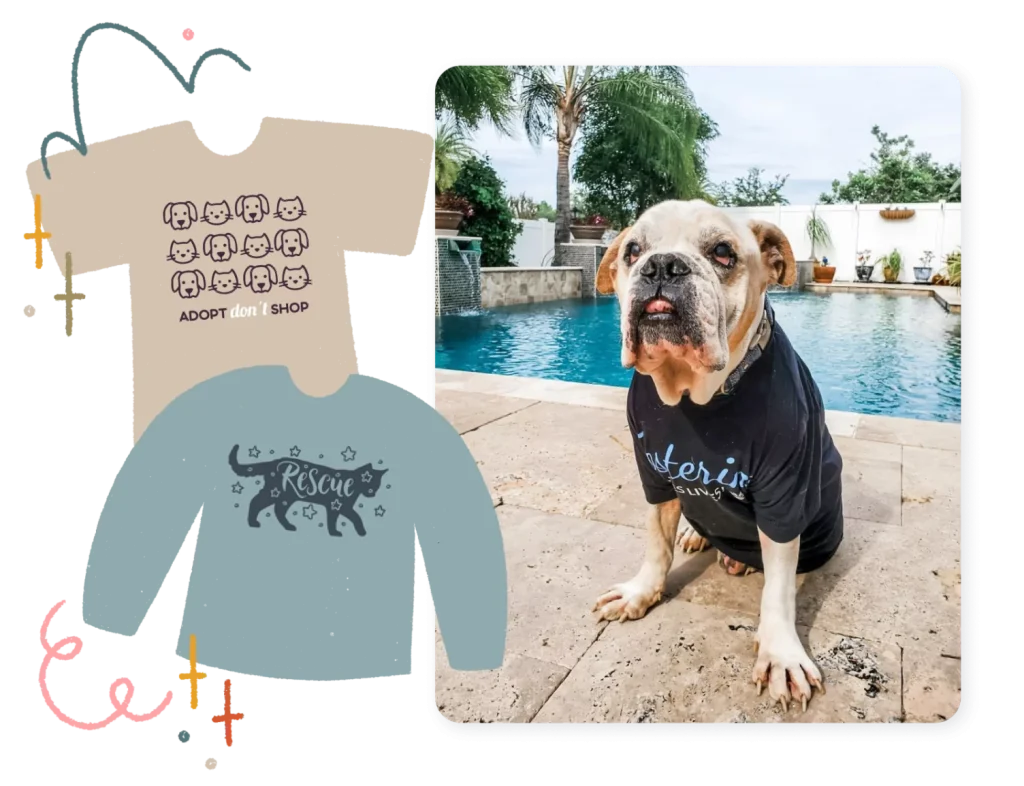The Role of Social Media in Promoting Animal Adoption

The Power of Social Media in Animal Adoption
In an era where digital interaction shapes significant lifestyle choices, social media’s role in promoting animal adoption cannot be overstated. Platforms like Facebook, Instagram, and Twitter are not just channels for social interaction; they have become critical tools for advocacy, community building, and urgent outreach regarding animal rescues.
Viral Campaigns: Amplifying Reach and Influence
Engaging content is key to any successful campaign, and nonprofits have harnessed this in remarkable ways. For instance, videos showcasing heartwarming rescues or transformation stories of formerly forgotten pets have been known to gain millions of views. A notable example includes the “#AdoptDontShop” movement, which gained traction through stories of shelter animals finding their forever homes. These viral narratives not only tug at the heartstrings but also effectively spread vital messages about animal welfare. These campaigns leverage emotions that resonate deeply with audiences, making them more likely to share such content, contributing to a ripple effect that amplifies reach.
Community Building: Creating Supportive Networks
Social media does not just facilitate one-off interactions but fosters tight-knit communities. Groups dedicated to animal welfare allow users to unite around a common goal—finding homes for homeless pets. For example, platforms like Facebook host pages where local shelters and rescue organizations post about animals in need. In many cases, these communities extend beyond mere awareness; they provide information about adoption processes, tips for new pet owners, and avenues for volunteering or donating. The sense of camaraderie within these groups encourages individuals to adopt, share experiences, and advocate for animals in need.
Real-Time Updates: Quick Responses to Urgent Needs
Social media’s speed and immediacy facilitate urgent outreach for animals that require immediate rehoming or medical attention. Shelters utilize platforms to share urgent pleas for specific animals, often using eye-catching visuals and captivating stories to stimulate quick responses from potential adopters. For example, within hours of posting a story about a dog facing euthanasia, these appeals can generate significant interactions and shares, often leading to a swift rehoming decision. This capability for real-time communication empowers shelters to act quickly and effectively, potentially saving countless lives.
Statistics indicate that over 70% of all pet adoptions consider social media a crucial aspect of their decision-making process. With an expanding global user base, these channels provide shelters with invaluable exposure, turning casual followers into potential adopters.

By empowering individuals to share stories and posts about pet adoption, social media transforms each user into a potential advocate. When people share about their experiences with adoption, they not only help find homes for pets but also educate others on the importance of responsible pet ownership, such as the necessity of spaying and neutering, and emphasize the joys of adopting over purchasing. This dynamic illustrates how digital platforms can foster a culture of compassion and responsible community engagement.
In summary, the multifaceted influence of social media on animal adoption is profound and undeniable. As organizations continue to innovate their approaches and technology advances, it will be fascinating to observe how this landscape evolves, further bridging the gap between abandoned animals and the loving homes they deserve.
DISCOVER MORE: Click here to learn about your pet’s hydration needs
Transforming Animal Welfare Through Social Media
Social media platforms have dramatically transformed the landscape of animal adoption, providing shelters and rescue organizations with a potent channel for engaging the public. What was once a word-of-mouth effort now thrives on platforms where captivating images and stories can reach thousands, if not millions, in just seconds. This digital boom has ushered in a new era of animal welfare advocacy, bringing light to the needs of countless animals awaiting homes.
Influencer Partnerships: Expanding Awareness
One of the notable strategies emerging in recent years is the collaboration between animal shelters and social media influencers. These partnerships can significantly elevate the visibility of adoption campaigns. Influencers with large followings can share compelling narratives and visuals that make animals’ stories resonate with their audience. For example, when a popular influencer adopts a shelter dog and posts about it, their followers often feel inspired to consider adoption themselves. Such collaborations drive home the message of how fulfilling adopting a pet can be while normalizing the idea of rescuing animals in need.
Effective Use of Visual Storytelling
When it comes to social media, visuals reign supreme. Images and videos often tell a story more impactfully than text alone. Many shelters have tailored their social media strategies to highlight their animals through high-quality pictures and engaging video content. Successful posts may include:
- Before-and-after videos showcasing the transformation of rescued animals.
- Daily life snippets with adoptable pets to forge emotional connections with potential adopters.
- Live streams or virtual meet-and-greets to interact directly with audiences.
Such visual storytelling is potent for capturing attention quickly and conveying a sense of urgency—appealing directly to the viewers’ emotions and inviting them to consider adoption seriously.
Targeted Campaigns: Reaching the Right Audience
Another advantage social media provides is the ability to run targeted advertising campaigns. Organizations can fine-tune their messaging to reach specific demographics, ensuring that potential adopters see the animals available in their area. By utilizing audience insights from platforms like Facebook and Instagram, shelters can track engagement and make data-driven decisions to refine their strategies. This targeted approach means that pets at risk of being overlooked or forgotten can find their match with families actively looking to adopt.
As of recent statistics, approximately 55% of pet adopters in the United States reported that they first learned about their future pets through social media channels. Such figures speak volumes about the varying influences that digital platforms exert when it comes to facilitating animal adoption.
Ultimately, social media offers a dynamic environment that allows an ongoing conversation around animal adoption. By implementing innovative strategies and tapping into the power of community, shelters can leverage these platforms to bring about meaningful change in the lives of animals and their future families.
| Advantage | Description |
|---|---|
| Wider Reach | Social media platforms such as Facebook, Instagram, and Twitter allow shelters and rescue organizations to share their animals with a larger audience than traditional methods. |
| Storytelling | Sharing compelling stories and images of animals looking for homes creates emotional connections, encouraging more people to adopt. |
| Community Engagement | Social media fosters a sense of community, enabling users to interact through likes, shares, and comments, amplifying the message and promoting adoption events. |
| Cost-Effectiveness | Using social media for promotion is typically more affordable than traditional advertising, allowing shelters to allocate more resources to animal care. |
Additionally, many shelters and organizations utilize engaging content such as videos and live streams to showcase the animals, making potential adopters feel more inclined to visit and meet them in person. Social media also encourages sharing amongst users, thereby multiplying the reach and visibility of adoptable pets exponentially. The phrase “sharing is caring” applies strongly here, as reposts by followers can introduce animals to potential adopters who may have never otherwise connected with a shelter. In this way, social media plays a pivotal role in transforming mere views into real-world actions—adopting a loving companion.
DISCOVER MORE: Click here to learn about the impact of sleep routines on your pet’s health
Building Community: The Power of Engagement
Social media does not just facilitate one-way communication; it fosters a sense of community among animal lovers and advocates for adoption. Engaging content encourages interaction and dialogue, creating a shared space where followers can exchange ideas, experiences, and fosters a sense of belonging. For instance, platforms like Facebook and Instagram allow shelters to host Q&A sessions where potential adopters can ask questions about the adoption process or specific animals, thus demystifying the act of adopting while generating enthusiasm and interest.
Success Stories: Showcasing Happy Endings
Highlighting success stories is another compelling way social media promotes animal adoption. Shelters and rescue organizations often share updated posts featuring formerly homeless animals now thriving in loving homes. These “success stories” work as testimonials and can be particularly convincing in persuading potential adopters. For example, a video montage of pets from local shelters adjusting to their new lives can evoke feelings of happiness and fulfillment, showcasing the tangible impact of adoption.
Moreover, involving adopters in sharing their stories can give a unique perspective on the benefits of adopting. When a new pet owner shares photos and narrates their journey with an adopted pet, it not only strengthens the community bond but also provides potential adopters with relatable scenarios, thus demystifying the process of bringing a rescue animal into their lives.
Utilizing Social Media Trends
The rapidly changing world of social media trends can be leveraged to jockey the spotlight on animal adoption. Viral campaigns employing hashtags, challenges, or themes draw together users and amplify awareness. For instance, initiatives like #AdoptDontShop encourage users to post about their adopted pets, spreading the message beyond the immediate network of each user. In 2020, an overwhelming number of shelters found success with viral challenges that incentivized sharing adoption stories and photos, often leading to an increase in inquiries and actual adoptions.
Furthermore, utilizing Twitter and TikTok for trends and challenges can become a catalyst for awareness around adoption. For example, short video clips demonstrating the day in the life of a shelter pet can capture attention quickly while creating an emotional connection with those considering pet adoption.
The Impact of Social Proof
In the digital age, the phenomenon known as social proof plays a significant role in influencing decisions, including pet adoption. When individuals see their friends and family sharing posts about adopting pets, or if they notice a surge in likes and comments on an adoption post, they are more likely to feel inclined to follow suit. Research shows that the presence of endorsements or supportive comments can heavily influence public opinion on adoption.
Moreover, when shelters showcase endorsements from local celebrities or well-known figures who adopt pets, it can lead to increased interest and awareness about adopting from shelters. These endorsements provide a level of social proof that resonates, demonstrating that adopting a pet is a responsible and commendable choice.
By effectively engaging audiences and capitalizing on trends, shelters can create a movement around animal adoption. Social media acts as a powerful platform for raising awareness and decreasing the stigma surrounding rescue pets, ultimately shifting perceptions and fostering lifelong bonds between animals and their forever families.
LEARN MORE: Click here to discover why socialization matters for your pet’s emotional health
Conclusion
In conclusion, social media has transformed the landscape of animal adoption, serving not just as a tool for awareness but as a dynamic platform for community engagement and emotional storytelling. By utilizing the power of engagement, success stories, and trends, shelters can effectively reach potential adopters and foster connections that transcend digital boundaries. The ability to highlight real-life transformations through shared experiences not only encourages individuals to consider adoption but also normalizes the idea of rescuing pets, thereby reducing the stigma surrounding shelter animals.
Moreover, the influence of social proof cannot be overstated; as more users see their friends, celebrities, and influencers advocating for animal adoption, it paves the path for a broader cultural shift that values rescue animals. Utilizing viral campaigns and trending content, organizations have the capability to amplify their message, reaching audiences who may not have previously considered adoption.
As we move into a more interconnected future, it is essential to leverage the potential of social media not only for individual initiatives but as part of a larger movement. By enhancing visibility for homeless pets and fostering supportive communities, social media can play a pivotal role in transforming lives—both human and animal. Every click, like, and share could lead to a new beginning for countless animals seeking forever homes, making the collective effort towards animal adoption through social media not merely a possibility, but a responsible reality.


